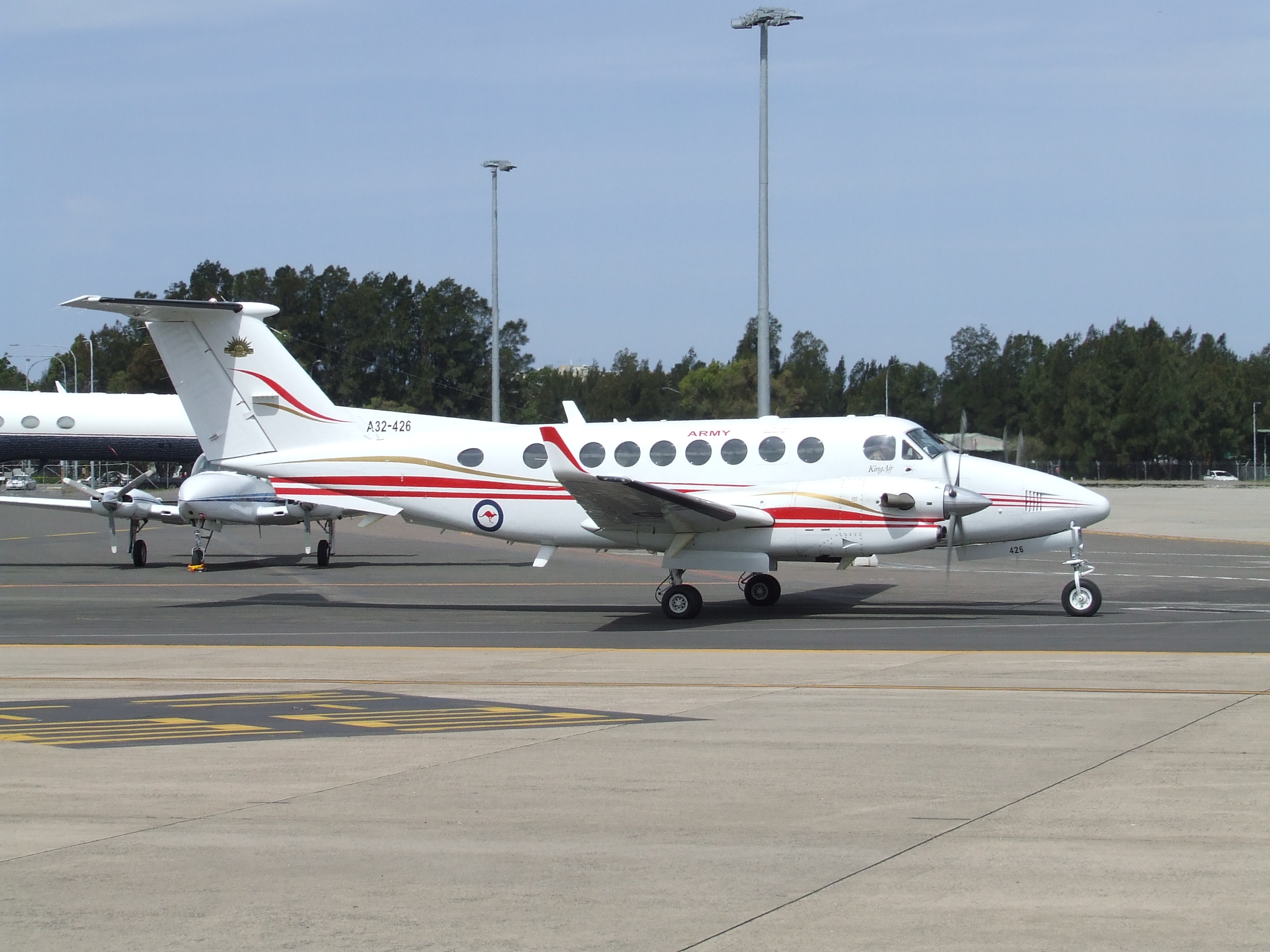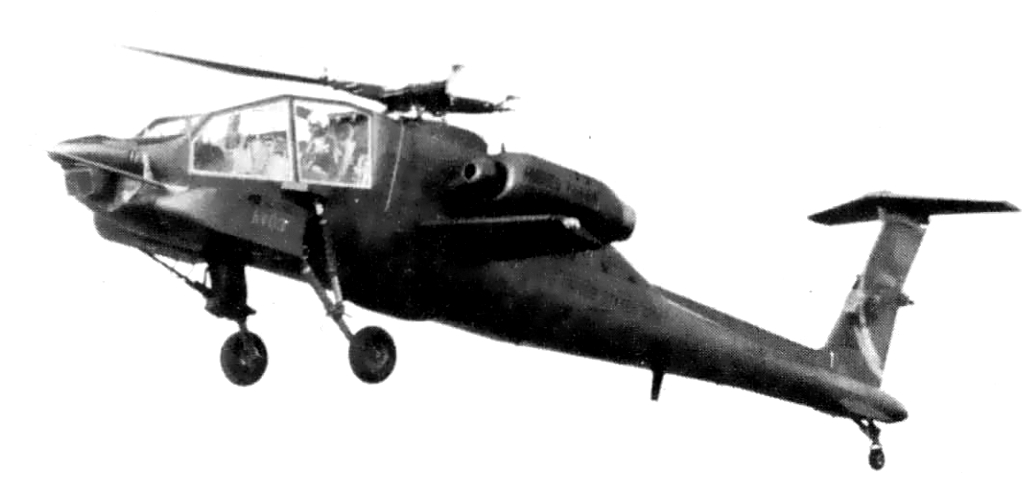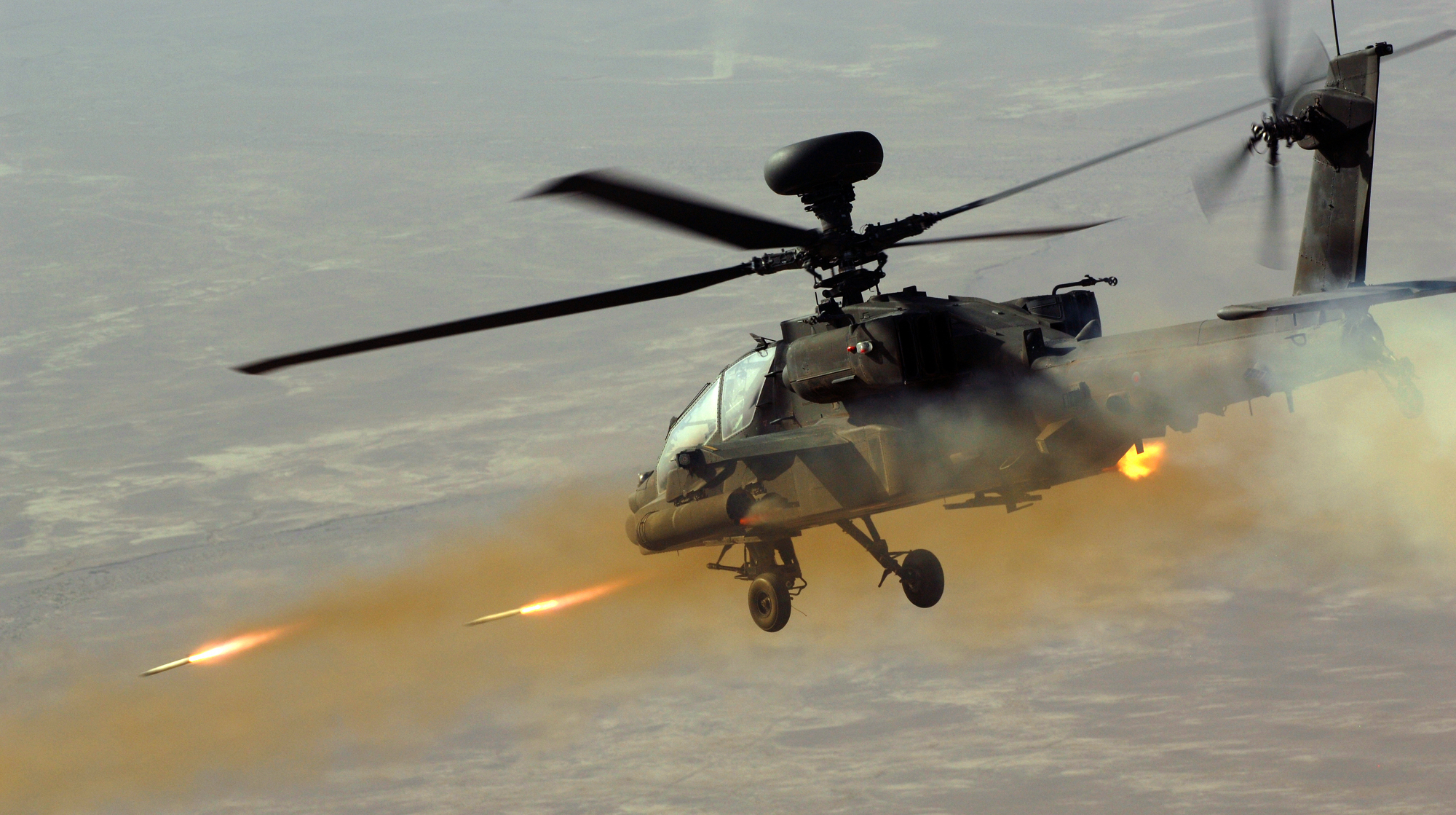|
1st Aviation Regiment (Australia)
The 1st Aviation Regiment is one of the Australian Army's three Army Aviation regiments and provides aerial reconnaissance and fire support to the Australian Army. The 1st Aviation Regiment, equipped with Eurocopter Tiger attack helicopters, forms part of the 16th Aviation Brigade and is based at Gaza Lines, Robertson Barracks, Darwin. History The Regiment was formed on 26 April 1966 as the 1st Division Army Aviation Regiment and was re-designated the 1st Aviation Regiment on 31 March 1967. The regiment had historically operated a mix of fixed-wing and rotary aircraft. In late 2004, the regiment was re-organised for its new role to operate the Tiger Armed Reconnaissance Helicopter (ARH). As part of this restructure, 171st Operational Support Squadron and 173rd Surveillance Squadron were placed as direct command units of the 16th Aviation Brigade. During 2005 and 2006, the regiment consolidated all of the remaining squadrons into one location for the first time, at Gaz ... [...More Info...] [...Related Items...] OR: [Wikipedia] [Google] [Baidu] |
Australian Army
The Australian Army is the principal Army, land warfare force of Australia, a part of the Australian Defence Force (ADF) along with the Royal Australian Navy and the Royal Australian Air Force. The Army is commanded by the Chief of Army (Australia), Chief of Army (CA), who is subordinate to the Chief of the Defence Force (Australia), Chief of the Defence Force (CDF) who commands the ADF. The CA is also directly responsible to the Minister of Defence (Australia), Minister for Defence, with the Department of Defence (Australia), Department of Defence administering the ADF and the Army. Formed in 1901, as the Commonwealth Military Forces, through the amalgamation of the colonial forces of Australia following the Federation of Australia. Although Australian soldiers have been involved in a number of minor and major conflicts throughout Australia's history, only during the Second World War has Australian territory come under direct attack. The Australian Army was initially composed a ... [...More Info...] [...Related Items...] OR: [Wikipedia] [Google] [Baidu] |
173rd Aviation Squadron (Australia)
The 173rd Aviation Squadron is an Australian Army helicopter training squadron equipped with MRH 90 Taipan helicopters and provides support to the Special Operations Command. The squadron is based at Luscombe Airfield, Holsworthy Barracks, Sydney and forms part of the 6th Aviation Regiment. The squadron may have been renamed as it does not appear in an Army December 2020 Order of battle. The squadron originally operated fixed-wing aircraft designated as the 173rd General Support Squadron and was later renamed the 173rd Surveillance Squadron. In 2010, the squadron was renamed the 173rd Aviation Squadron when it transitioned to rotary aircraft. History On 17 February 1974, the 173rd General Support Squadron was formed as part of the 1st Aviation Regiment based at Oakey and initially operated 6 Pilatus PC-6 Porters. In 1978, the squadron also received 11 GAF Nomad aircraft.. During this time, the squadron undertook a variety of Army co-operation roles utilising the short take-o ... [...More Info...] [...Related Items...] OR: [Wikipedia] [Google] [Baidu] |
Military Units And Formations Established In 1966
A military, also known collectively as armed forces, is a heavily armed, highly organized force primarily intended for warfare. It is typically authorized and maintained by a sovereign state, with its members identifiable by their distinct military uniform. It may consist of one or more military branches such as an army, navy, air force, space force, marines, or coast guard. The main task of the military is usually defined as defence of the state and its interests against external armed threats. In broad usage, the terms ''armed forces'' and ''military'' are often treated as synonymous, although in technical usage a distinction is sometimes made in which a country's armed forces may include both its military and other paramilitary forces. There are various forms of irregular military forces, not belonging to a recognized state; though they share many attributes with regular military forces, they are less often referred to as simply ''military''. A nation's military may f ... [...More Info...] [...Related Items...] OR: [Wikipedia] [Google] [Baidu] |
Aviation Units And Formations Of The Australian Army
Aviation includes the activities surrounding mechanical flight and the aircraft industry. ''Aircraft'' includes fixed-wing and rotary-wing types, morphable wings, wing-less lifting bodies, as well as lighter-than-air craft such as hot air balloons and airships. Aviation began in the 18th century with the development of the hot air balloon, an apparatus capable of atmospheric displacement through buoyancy. Some of the most significant advancements in aviation technology came with the controlled gliding flying of Otto Lilienthal in 1896; then a large step in significance came with the construction of the first powered airplane by the Wright brothers in the early 1900s. Since that time, aviation has been technologically revolutionized by the introduction of the jet which permitted a major form of transport throughout the world. Etymology The word ''aviation'' was coined by the French writer and former naval officer Gabriel La Landelle in 1863. He derived the term from the v ... [...More Info...] [...Related Items...] OR: [Wikipedia] [Google] [Baidu] |
Regiments Of Australia
A regiment is a military unit. Its role and size varies markedly, depending on the country, military service, service and/or a administrative corps, specialisation. In Middle Ages, Medieval Europe, the term "regiment" denoted any large body of line regiment, front-line soldiers, recruited or conscripted in one geographical area, by a leader who was often also the feudal lord ''in capite'' of the soldiers. Lesser barons of knightly rank could be expected to muster or hire a Company (military unit), company or battalion from their manorial estate. By the end of the 17th century, infantry regiments in most European armies were permanent units, with approximately 800 men and commanded by a colonel. Definitions During the modern era, the word "regiment" – much like "corps" – may have two somewhat divergent meanings, which refer to two distinct roles: # a front-line military formation; or # an administrative or ceremonial unit. In many armies, the first role has been assum ... [...More Info...] [...Related Items...] OR: [Wikipedia] [Google] [Baidu] |
Full Operating Capability
In military acquisition, full operating capability or full operational capability (FOC) is the completion of a development effort. This is usually preceded by an initial operating capability or initial operational capability (IOC) phase. For the United States Department of Defense military acquisition Military acquisition or defense acquisition is the "bureaucratic management and procurement process", dealing with a nation's investments in the technologies, programs, and product support necessary to achieve its national security strategy a ... FOC is defined as "''in general attained when all units and/or organizations in the force structure scheduled to receive a system have received it and have the ability to employ and maintain it. The specifics for any particular system FOC are defined in that system’s Capability Development Document (CDD) and Capability Production Document (CPD)''." FOC is a certification event marking completion of training, providing maintenance faci ... [...More Info...] [...Related Items...] OR: [Wikipedia] [Google] [Baidu] |
Initial Operating Capability
Initial operating capability or initial operational capability (IOC) is the state achieved when a capability is available in its minimum usefully deployable form. The term is often used in government or military procurement. The United States Department of Defense chooses to use the term ''initial operational capability'' when referring to IOC. For a U.S. Department of Defense military acquisition, IOC includes operating the training and maintaining parts of the overall system per DOTMLPF, and is defined as:"In general, attained when some units and/or organizations in the force structure scheduled to receive a system have received it and have the ability to employ and maintain it. The specifics for any particular system IOC are defined in that system’s Capability Development Document (CDD) and Capability Production Document (CPD)."The date at which IOC is achieved often defines the in-service date (ISD) for an associated system. Declaration of an initial operating capability ma ... [...More Info...] [...Related Items...] OR: [Wikipedia] [Google] [Baidu] |
Boeing AH-64 Apache
The Boeing AH-64 Apache () is an American twin-turboshaft attack helicopter with a tailwheel-type landing gear arrangement and a tandem cockpit for a crew of two. It features a nose-mounted sensor suite for target acquisition and night vision systems. It is armed with a M230 chain gun carried between the main landing gear, under the aircraft's forward fuselage, and four hardpoints mounted on stub-wing pylons for carrying armament and stores, typically a mixture of AGM-114 Hellfire missiles and Hydra 70 rocket pods. The AH-64 has significant systems redundancy to improve combat survivability. The Apache began as the ''Model 77'' developed by Hughes Helicopters for the United States Army's Advanced Attack Helicopter program to replace the AH-1 Cobra. The prototype YAH-64 was first flown on 30 September 1975. The U.S. Army selected the YAH-64 over the Bell YAH-63 in 1976, and later approved full production in 1982. After purchasing Hughes Helicopters in 1984, McDonnell D ... [...More Info...] [...Related Items...] OR: [Wikipedia] [Google] [Baidu] |
Attack Helicopter
An attack helicopter is an armed helicopter with the primary role of an attack aircraft, with the offensive capability of engaging ground targets such as enemy infantry, military vehicles and fortifications. Due to their heavy armament they are sometimes called helicopter gunships. Attack helicopters can use weapons including autocannons, machine guns, rockets, and anti-tank missiles such as the AGM-114 Hellfire. Some attack helicopters are also capable of carrying air-to-air missiles, though mostly for purposes of self-defense against other helicopters and low-flying light combat aircraft. A modern attack helicopter has two primary roles: first, to provide direct and accurate close air support for ground troops; and second, the anti-tank role to destroy grouped enemy armor. Attack helicopters are also used as protective escort for transport helicopters, or to supplement lighter helicopters in the armed reconnaissance roles. In combat, an attack helicopter is proj ... [...More Info...] [...Related Items...] OR: [Wikipedia] [Google] [Baidu] |
16th Aviation Brigade (Australia)
The 16th Aviation Brigade (16 Avn Bde) commands all the Australian Army aviation units and has technical control of the Army Aviation Training Centre reporting to Army Aviation Command. The Brigade was formed on 2 April 2002 by combining Headquarters Divisional Aviation (Operational Command) and Headquarters Aviation Support Group (Technical Command) and is headquartered in Enoggera Barracks, Queensland. It was originally named Headquarters 16th Brigade (Aviation) and was renamed to the 16th Aviation Brigade. The Army Aviation Training Centre (AAvnTC) based at Oakey is responsible for training and maintains a training fleet reporting separately to Army Aviation Command. Current structure The 16th Aviation Brigade currently consists of: *16th Aviation Brigade headquarters (Enoggera Barracks, Brisbane, Queensland) ** 1st Aviation Regiment (armed reconnaissance helicopter, Robertson Barracks, Darwin, Northern Territory) ***161st Reconnaissance Squadron ***162nd Reconnaissance S ... [...More Info...] [...Related Items...] OR: [Wikipedia] [Google] [Baidu] |
Australian Army Aviation
Australian Army Aviation (AAAvn) is a corps of the Australian Army. It was formed on 1 July 1968, although it has a history dating back to 1911, when the Minister of Defence at the time, Senator George Pearce, decided there should be a flying school in the Defence Department. The motto of the Australian Army Aviation corps is Vigilance. In August 2018, the Corps consisted of 140 aircraft, 1495 uniformed personnel and over 3000 personnel engaged in industry support. AAAvn units also utilise soldiers from various other Army corps. The Royal Australian Electrical and Mechanical Engineers trains aeronautical engineers, structural fitters, technicians, life support staff and avionics technicians, while the Royal Australian Corps of Transport trains and provides air dispatchers and drivers. As with many other Army units, a wide range of qualified personnel fill roles within the regiments. Members of the Aviation Corps are entitled to wear a sky blue beret with the Corps or Regiment ... [...More Info...] [...Related Items...] OR: [Wikipedia] [Google] [Baidu] |
1st Aviation Regiment (modern)
{{mil-unit-dis ...
1st Aviation Regiment may refer to: *1st Aviation Regiment (Australia) * 1st Aviation Regiment (Poland) *1st Aviation Regiment (United States) The 1st Aviation Regiment is a task force and is a unit in the First Infantry Division's Combat Aviation Brigade, composed of three battalion units of pilots, crews, and teams within the United States Army. Structure * 1st Battalion (Attack Re ... [...More Info...] [...Related Items...] OR: [Wikipedia] [Google] [Baidu] |





